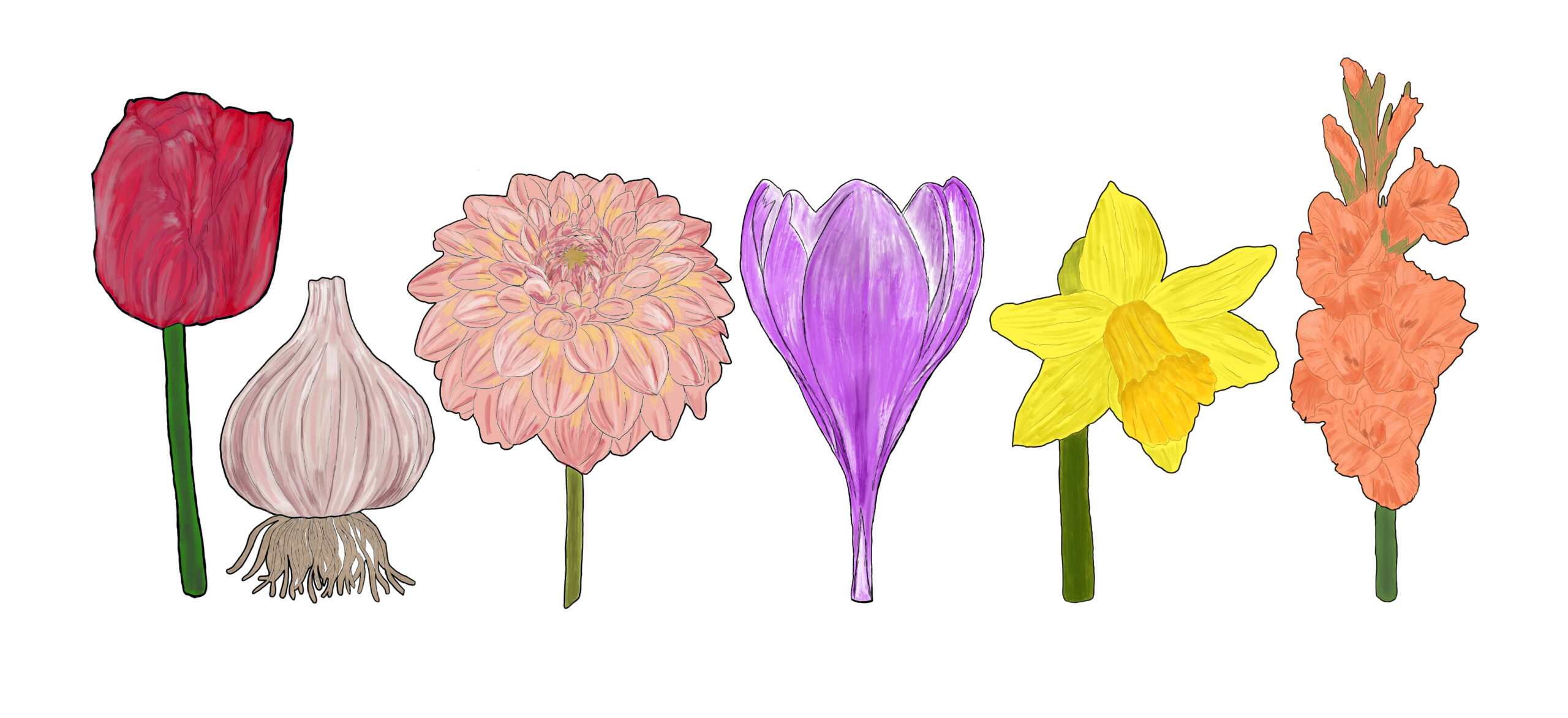We have relied upon plants for food, medicine and their beauty since our time on this planet began. The plants in our gardens have many stories to tell about our history. Among the first flowers to appear in spring are bulbs like the daffodil and crocus. In summer, tall spikes of gladioli and varied forms of dahlias make a vibrant cut flowers. In autumn, we plant more bulbs in anticipation of next year’s blooms.
Behind each bulb is a story. From the sunny daffodil to the tasty garlic, let’s delve into the history of some of our popular garden and edible bulbs.
Tulip
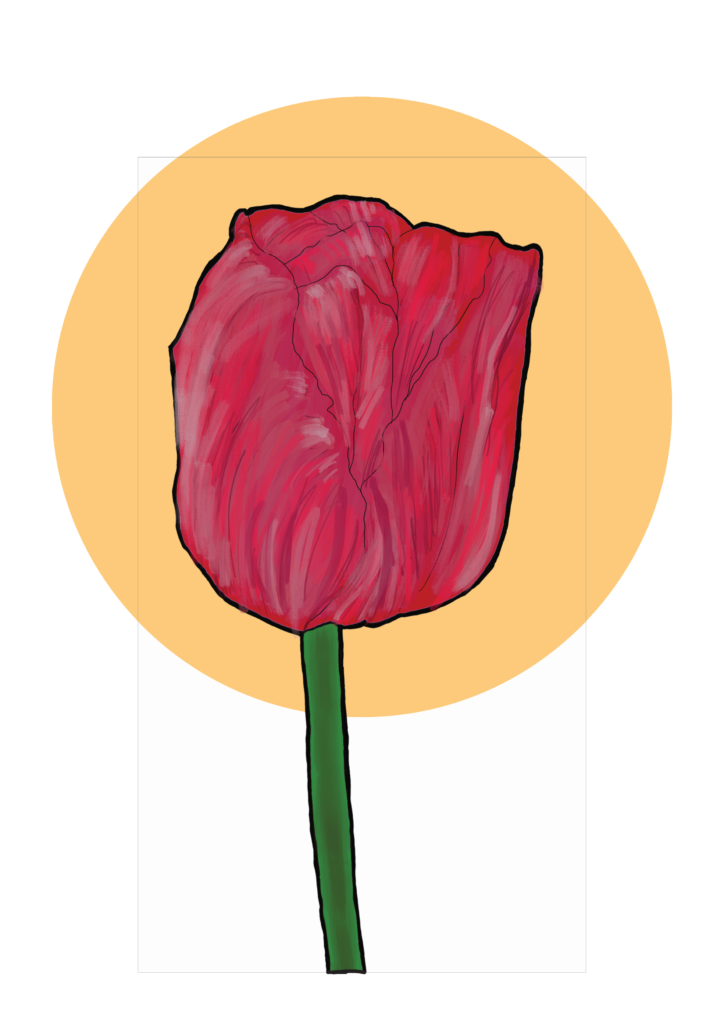
Tulip is the national flower of Iran, Turkey and The Netherlands.
Tulips are native to mountain ranges in central Asia, southern Russia, Turkey and Iran. They were cultivated in Iran from around the 10th century. The Ottoman Empire (also known as the Turkish Empire) really loved bulbous plants. Tulips were a prominent feature in their gardens, and they were skilfully cultivated to create different styles and colours.
In the 16th Century, European visitors to Constantinople (now known as Istanbul) saw gardens filled with colourful tulips and took specimens back with them. Europe soon followed the tulip craze and began cultivating new varieties. The Netherlands is now the largest producer of bulbs, including tulips, in the world.
Dahlia
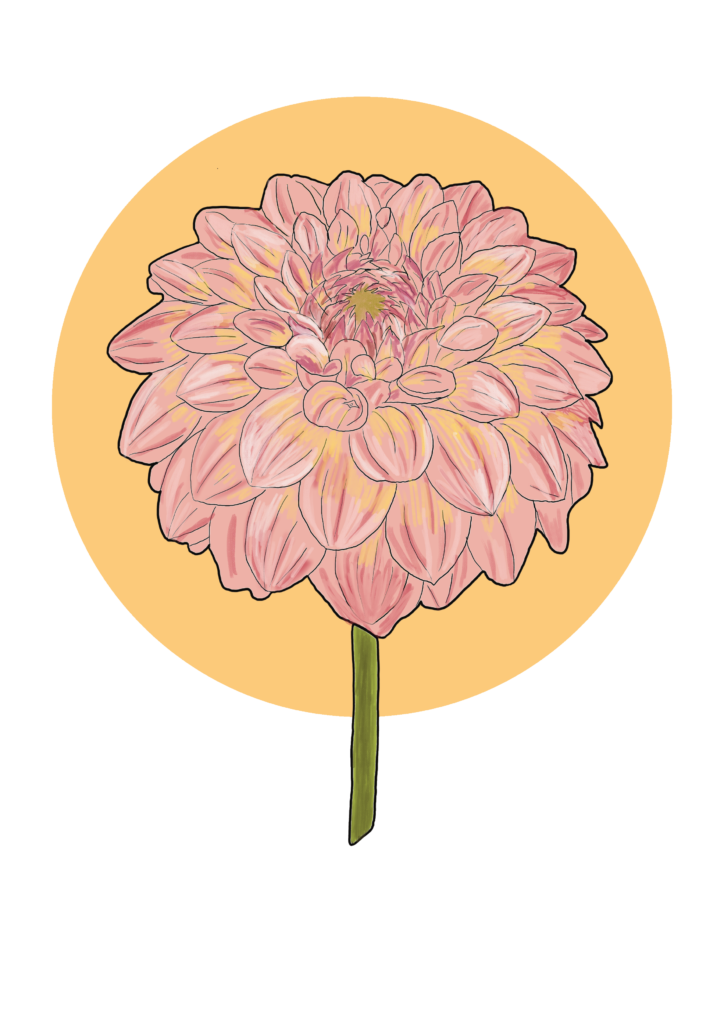
The Aztec people of Central America grew dahlias as a food plant.
Native to Mexico and Central America, colourful and ornate dahlias are popular with gardeners and florists in Europe today. Long before dahlia seeds were sent to Europe, the Aztec people cultivated these native flowers for their edible tubers.
Dahlia seeds were first sent to European growers in the 1780s. They did not become popular as a food plant (they taste quite bitter) but they did become a fashionable flower. Today, you can find lots of different styles and colours – but they don’t like being left outside in our wet British winters
Gladioli
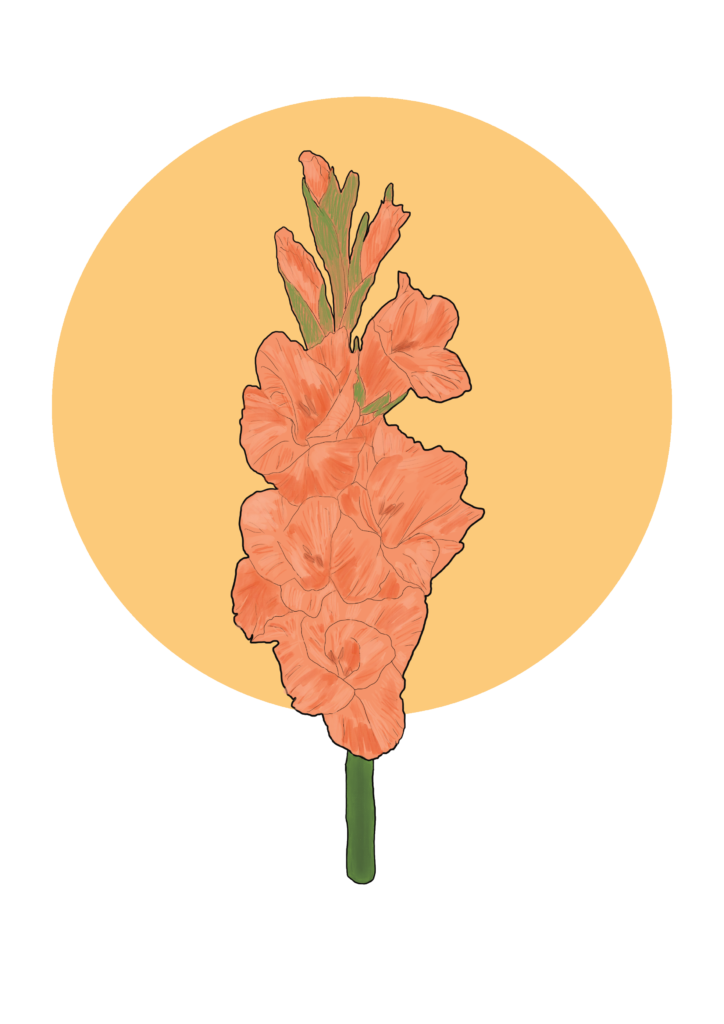
Gladioli flowers are native to Africa and the Mediterranean.
Tall, colourful flower spikes of gladioli make a lovely garden plant and flower bouquet. The gladioli we grow in Europe today derive from a mix of species native to tropical and southern Africa and the Mediterranean.
There are more than 250 species of gladiolus, and most of them come from Africa. In Africa, several communities use the corms of Gladiolus dalenii as food and medicine.
Bulbs from South Africa: Zantedeschia (calla lily), Nerine and Amaryllis are all native to South Africa.
Daffodil
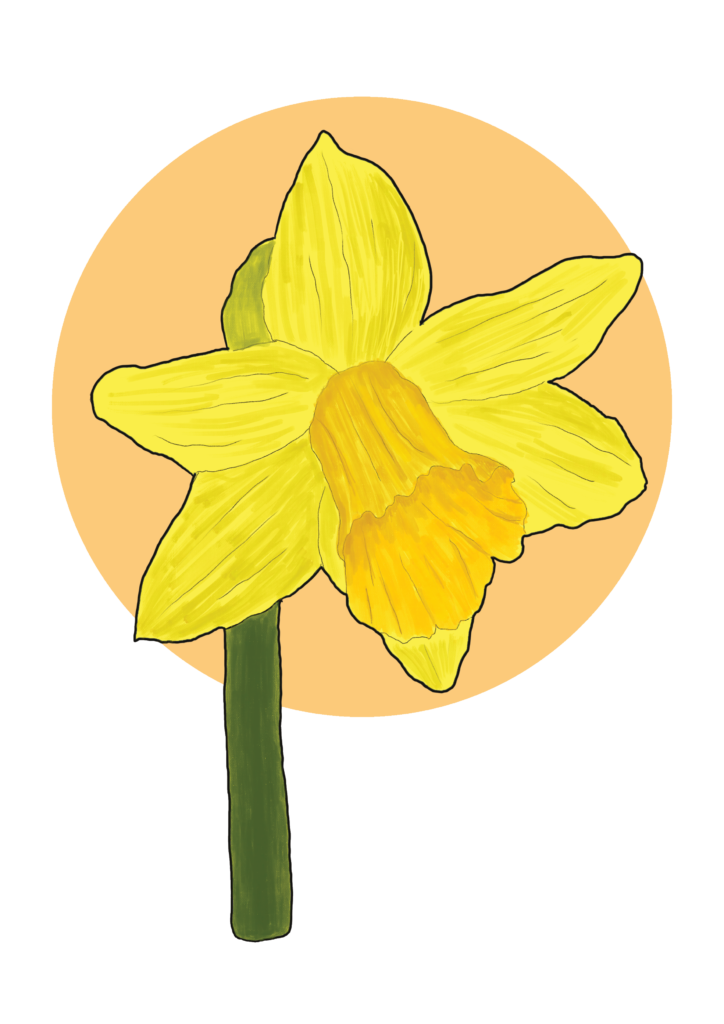
A symbol of good fortune, the daffodil is often used in flower displays for the Chinese New Year.
From China and Japan to Europe and Egypt, the daffodil (Narcissus) has a long history as a cultivated flower. European traders took Narcissus tazetta (a white-flowered daffodil with a yellow trumpet) to China and Japan in the 10th Century. Daffodils are known as the ‘Good Luck Flower ’in China. Preserved daffodils were found in ancient Egyptian tombs.
Daffodils initially grew in the wild in western and southern Europe, but from the 1500s onwards, they began to naturalise in woodlands and fields around northern Europe.
Garlic
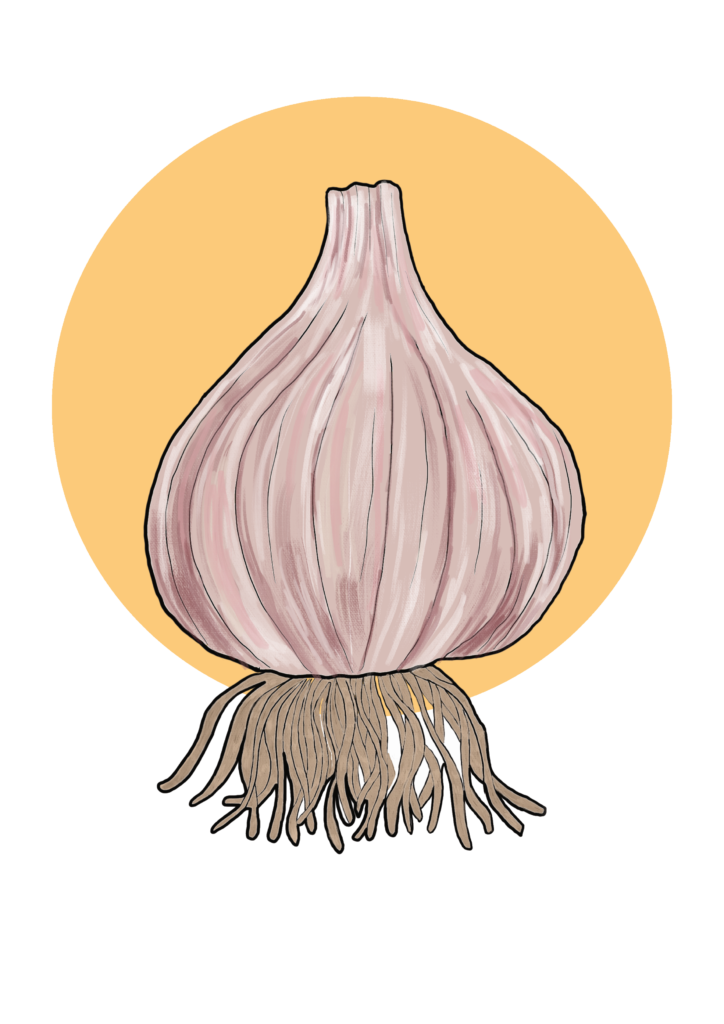
Humans have used garlic as food and medicine since ancient times.
The Qur’an, the Bible, and ancient Indian, Chinese, Egyptian and Greek texts, all mention the garlic. For over 3,000 years, Traditional Indian Medicine (Ayurveda) has used garlic. Lasuna, as garlic is called in Sanskrit, is prescribed for conditions such as cardiac diseases, fevers and worms.
Other edible bulbs: Onion (true bulb), ginger (rhizome), leeks (true bulbs), dahlia (tuber) and potato (tuber).
Crocus
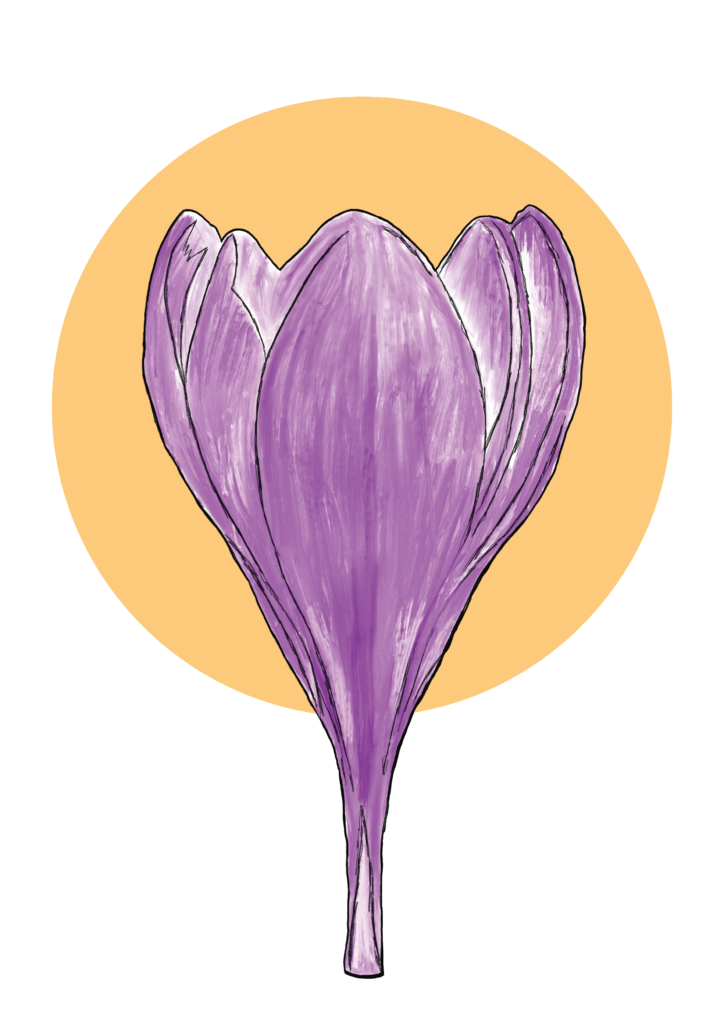
The saffron crocus is one of the oldest cultivated plants in the world.
The crocus is mainly native to Europe and the Mediterranean, and there are around 100 different species. They come in a variety of colours, including yellow and purple.
Saffron crocus (Crocus sativus) is one of the oldest cultivated plant’s in the world – it’s been used as a spice, medicine and as a dye plant since ancient times. The Minoans of Crete grew and traded saffron from as early as 1500 BC. Cleopatra, the Egyptian queen, bathed in saffron-infused water. Buddhist monks used saffron to dye their robes yellow.
It takes around 170,000 flowers to produce a single kilo of saffron, making it the most expensive spice in the world.
Plant Journeys
Plants travel around the world with the help of water, wind, animals and humans.
Pilgrims, nomadic tribes, soldiers, traders, refugees, slaves, merchants, scientists and explorers carried plants and seeds with them as they travelled over the centuries. The movement of plants across continents changed medicine, agriculture, ecosystems and how we garden. Sometimes for the better, and sometimes not.
Some plant collection practices through history did not consider the communities and ecosystems where the plants were extracted from, or where they are taken to.
Things are changing. Communities, growers, scientists and governments need to continue to have open conversations about the cultural and ecological impact of plant cultivation.
This blog is adapted from a bulb history activity created for The Hidden Gardens by writer and gardener Lynne Maclagan (former volunteer and garden assistant with The Hidden Gardens), and the artwork is by Alan Lyons.

